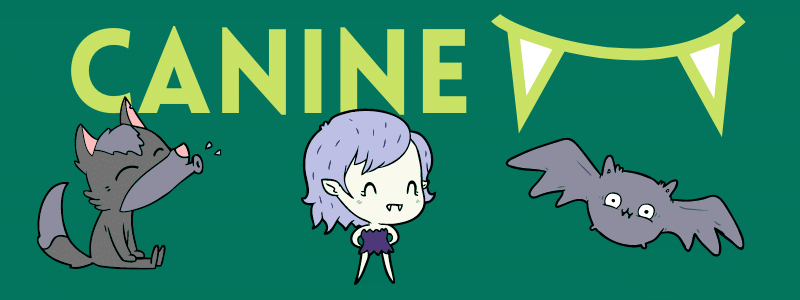
Let’s talk about canine teeth! Today, we’re talking about the research of scientist and canine tooth expert, Tahlia Pollock. Tahlia has studied the canine teeth of many different kinds of carnivores and we’ll find out what she learned in a moment.
But first, a quick primer on teeth:
The teeth of humans and other mammals come in different shapes.
Humans have four types of teeth: incisors, canines, premolars, and molars. Canines are those long, pointy teeth on either side of your incisors.
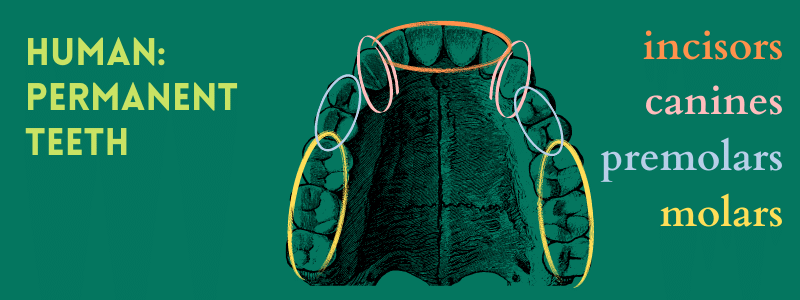
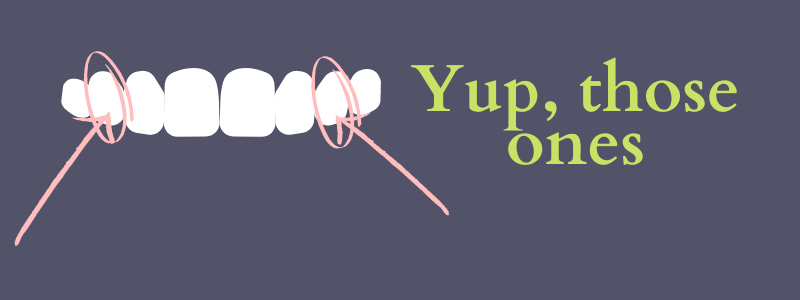
Each type of tooth has a different function.
Generally speaking, we humans use our incisors to grab and cut food (imagine biting down on an apple). We use our canines to tear food (like meat or pizza). We use our molars to crack or grind food while we chew (imagine eating nuts).
What about carnivore teeth?
Carnivores are meat-eating mammals. Like us, they also have several different types of teeth. They have incisors and canines and special cheek teeth used for shearing food. When they open wide, we can safely peek inside and see these different types of teeth …
All of these carnivores have long, pointed canines:

Image by Tahlia Pollock; photo credits: lion – Petr Ganaj, meerkat – Joshua J. Cotten, grizzly bear – mana520, African wild dog – Matt Burke, all via Unsplash
What do carnivores use their canines for?
Canine teeth are really important to carnivores. They use their canines to kill and eat their prey.
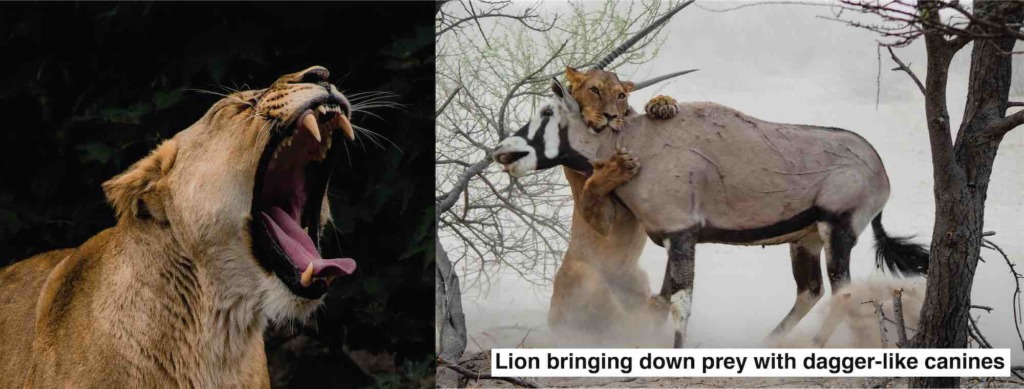
Image by Tahlia Pollock; photo credits: Mike van den Bos (left) and Thomas Evans (right), via Unsplash
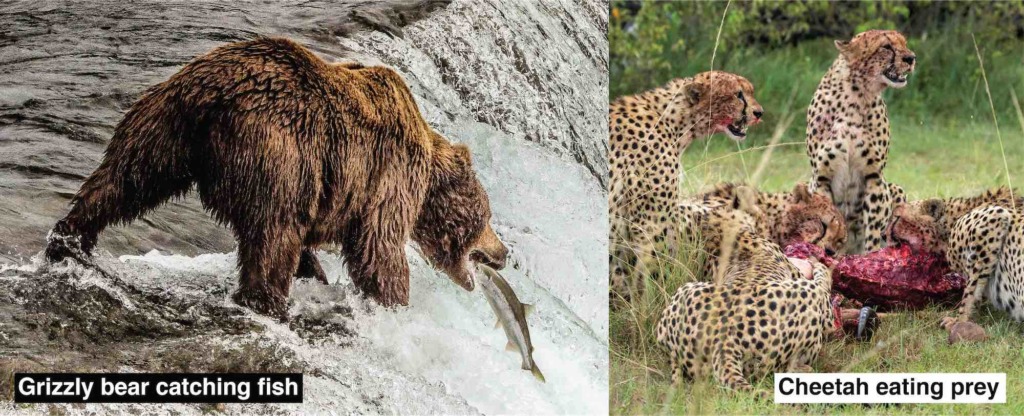
Image by Tahlia Pollock; photo credits: Michael Scherback (left) and Ahmed Galal (right), via Unsplash
New research investigates carnivore teeth with a 3D scanner!
Tahlia Pollock is a scientist at Monash University in Australia who has been closely examining carnivore canine teeth.
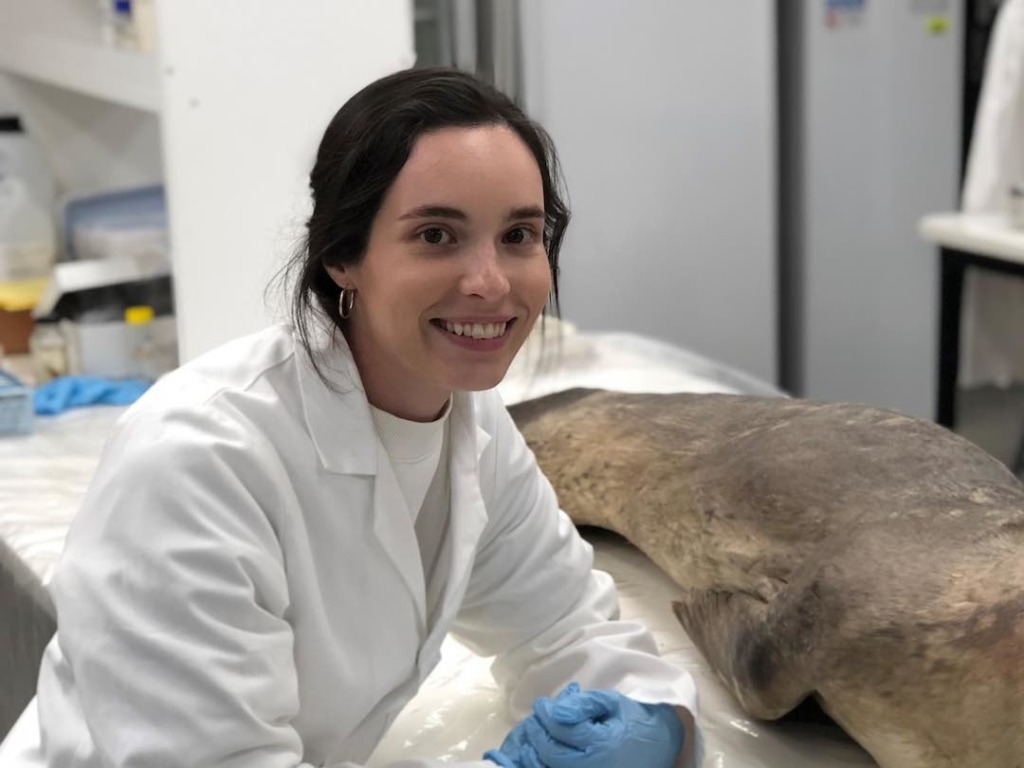
Tahlia Pollock at work. Supplied: Tahlia Pollock
Tahlia wanted to know: Do carnivores with different diets and hunting strategies have different-shaped canines?
To answer this question, Tahlia needed lots of carnivore canines to look at! She borrowed teeth from museums across Australia, the USA, and Europe. In total, she collected more than 200 canine teeth from 64 species of carnivores.
Tahlia then scanned the teeth with a 3D scanner. She used these scans to take measurements of the teeth, including tooth length, shape, and curvature (or how curved they are).
This is what Tahlia and her colleagues found out:
Finding 1: Canine teeth differ in three main ways: how sharp they are, how robust (or strong) they are, and how curved they are.
Here are some examples of the different types of carnivore teeth Tahlia observed:
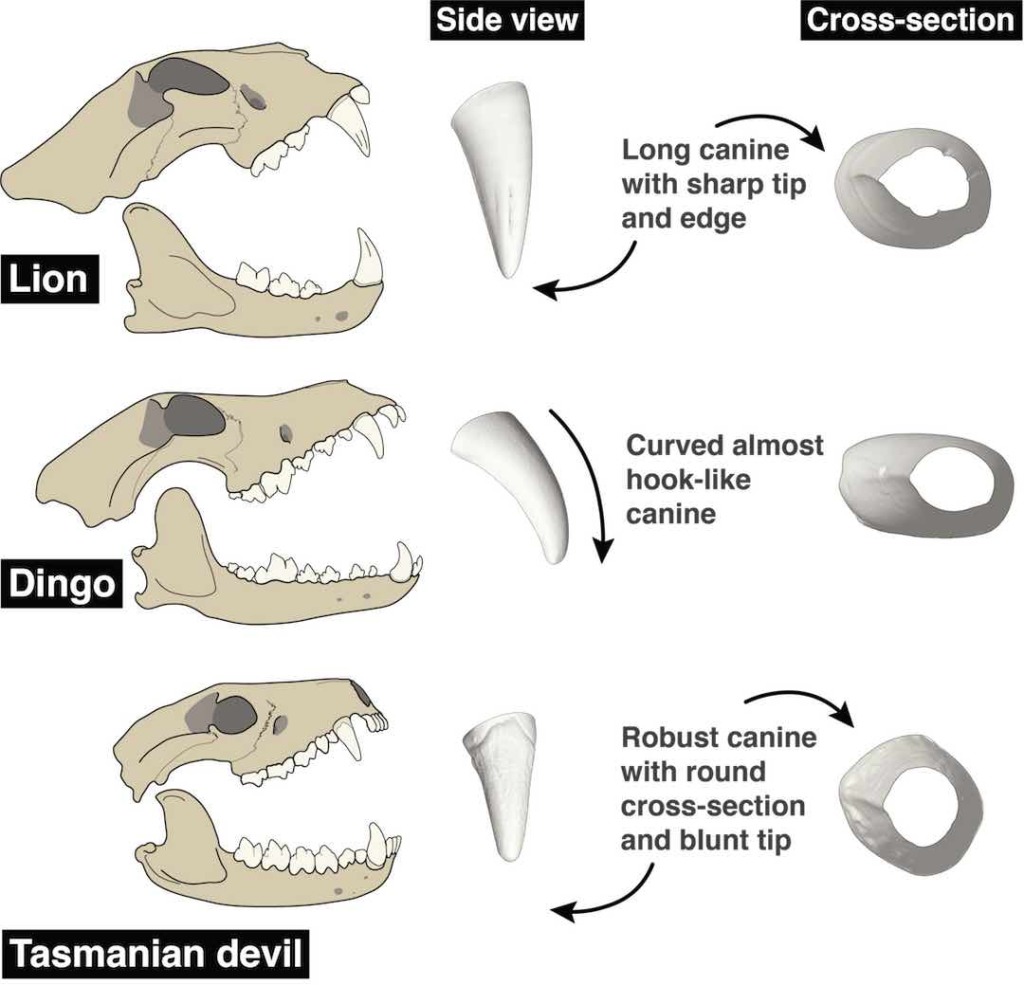
Image created by Tahlia Pollock
Finding 2: Carnivores with different diets and hunting strategies have evolved different-shaped canines.
Carnivores that kill prey by the throat or neck and eat softer body parts (like muscle) have slender, sharp canines. This includes many felids, like lions and clouded leopards.
Carnivores that bite or eat harder materials (like bone or exoskeleton) have strong, blunt canines. This includes weasels, hyenas, and Tasmanian devils.
Carnivores that kill their prey by shaking them have curved or hooked teeth, like the black-backed jackal and the large Indian civet.
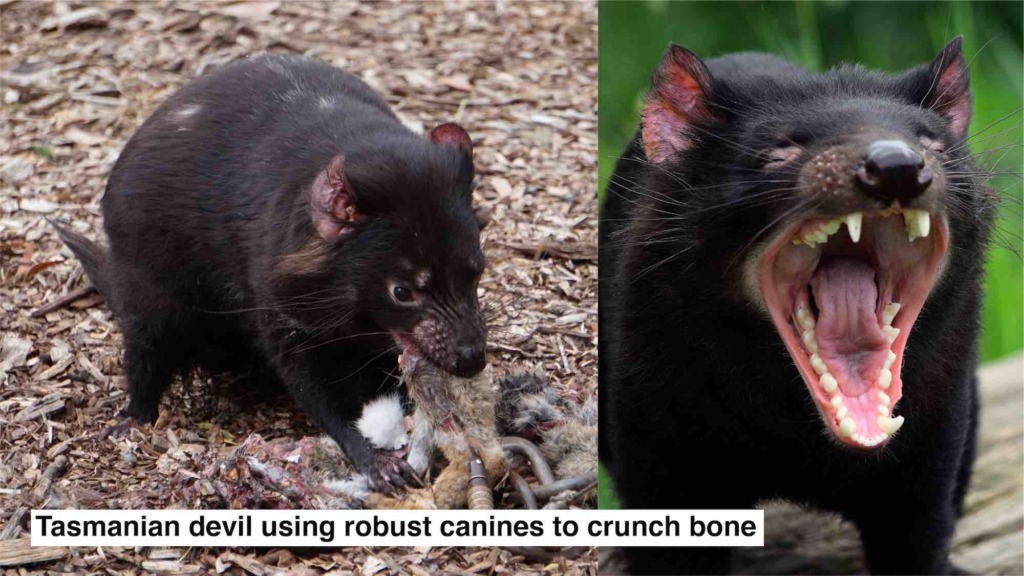
Image on the left: Tahlia Pollock. Image on the right: Meg Jerrard, via Unsplash
Finding 3: Canines of the upper jaw tend to be longer than canines of the lower jaw. There are other differences in the shape of upper and lower canines.
Fantastic finds, Tahlia! It is interesting how much we can learn by looking at teeth. We use our teeth every day, but we don’t often think about them.
Next time you look in the mirror, notice the shape of your upper and lower canines. When you eat, think about how you use your canines and other types of teeth.
Do some research of your own!
Curious about carnivore teeth? Study the teeth of your pet dog or cat with the help of a grown-up. Note: It is advisable to look at your pet’s mouth from a safe distance. Keep your hands away to avoid getting bitten and so you don’t disturb your pet. Do not approach pets while they are eating.
Try to answer these questions:
- Can you identify your pet’s incisors and canines?
- Can you see any other types of teeth in your pet’s mouth?
- How many incisors does your pet have on the top jaw? How about on the bottom jaw?
- Look at the shape and size of your pet’s canines: Are they sharp? Curved? How are they different from your own canine teeth?
Citation:
Tahlia I Pollock, David P Hocking, Alistair R Evans, The killer’s toolkit: remarkable adaptations in the canine teeth of mammalian carnivores, Zoological Journal of the Linnean Society, 2021; zlab064, https://doi.org/10.1093/zoolinnean/zlab064
Acknowledgement: Thanks to Tahlia Pollock for sharing her research findings and images. Tahlia is a PhD candidate in the Evans Evomorph Lab, School of Biological Sciences, Monash University.






